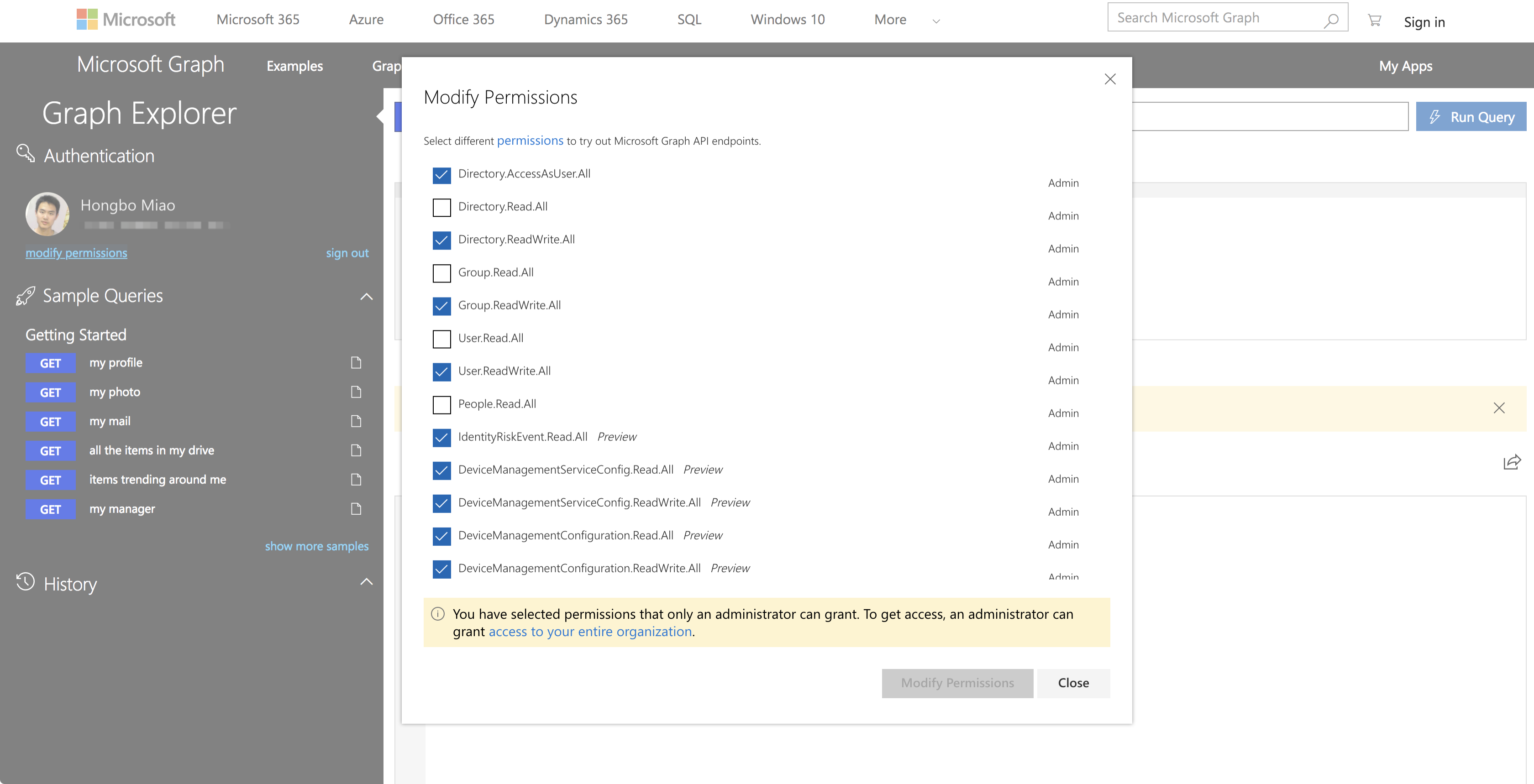The Microsoft Graph Explorer V4 lets developers quickly navigate and test API endpoints.
The Graph Explorer is written in TypeScript and powered by:
Microsoft Graph Explorer is built and developed using node v18.
npm installto install project dependencies.npmis installed by default with Node.js.npm startstarts the TypeScript compiler in watch mode and the local server. It should open your browser automatically with the Graph Explorer at http://localhost:3000/.
- Sign in to your Microsoft account (or Create one) at the Microsoft Azure Portal.
- Find the Azure service named App registrations. If you haven't used this service before, you might need to search for it in the search bar.
- In the App registrations page, click
+ New registration. You will be redirected to a form in the Microsoft Azure portal where you Register an application. Fill out the form and set the Redirect URI to aSingle-page application (SPA)withhttp://localhost:3000. You can also set it from authentication tab in the app you have just created. - Create a
.envfile at the root of the project/repo and add the following keys. - REACT_APP_CLIENT_ID=xxxxxxxx-xxxx-xxxx-xxxx-xxxxxxxxxxxx - REACT_APP_INSTRUMENTATION_KEY=xxxxxxxx-xxxx-xxxx-xxxx-xxxxxxxxxxxx WhereREACT_APP_CLIENT_IDis theApplication (client) IDfrom the Azure portal andREACT_APP_INSTRUMENTATION_KEYis theObject IDfrom the portal.
npm testto run tests from the command line for scenarios like parsing metadata and functional explorer tests.npm run lintlinting your files
Are you having any trouble with Micrososft Graph or would you like to request a Graph feature?
-
Check the Microsoft Graph - Microsoft Q&A and Microsoft Graph - Stack Overflow which provide solutions to commonly experienced issues and asked questions.
-
If there is no similar issue, submit the issue on Microsoft Q&A with the tag "Microsoft Graph" or ask questions on Stack Overflow.
-
For more information about Microsoft Graph, refer to the Microsoft Graph Docs and Microsoft Graph REST API Docs.
Are you new to Graph Explorer or would like to raise a bug or request a feature?
-
Use our Graph Explorer Getting Started Docs to get guidance on how to quickly use Graph Explorer.
-
Use https://github.com/microsoftgraph/microsoft-graph-explorer-v4/issues to report Graph Explorer bugs and to suggest new features or enhancements (and ask Graph Explorer related questions).
-
To simplify your Microsoft Graph app-building experience, use our Microsoft Graph SDKs and Microsoft Graph Toolkit (MGT) which provide fully functional and out-of-the-box web components.
-
Refer to Microsoft Graph Quick Start to get a pre-initialized SDK sample application up and running in less 3 minutes using the language of your choice.
Please see the contributing guidelines.
This project has adopted the Microsoft Open Source Code of Conduct. For more information see the Code of Conduct FAQ or contact [email protected] with any additional questions or comments.
- Playwright requires a running GE Url to run against.
- In your
.envfile, create add variables:- PLAYWRIGHT_TESTS_USERNAME='your demo tenant email address'
- PLAYWRIGHT_TESTS_PASSWORD='password to the demo tenant account'
- PLAYWRIGHT_TESTS_BASE_URL='url that you are running against' // http://localhost:3000 if testing locally
- Save your changes.
- On your terminal run the command
npx playwright install - On your terminal run the command
npx playwright install-deps. - Once the installation is complete run the command
npx playwright test ui. - Playwright commands can be extended using arguments described in the official documentation Running tests
Copyright (c) 2017 Microsoft. All rights reserved.



